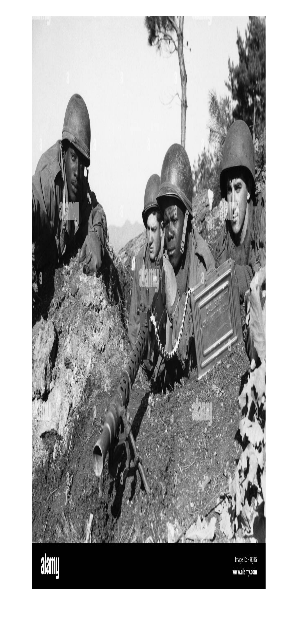Irrespective of the scale, war has been known to leave an indelible mark on the environment and on lives. The Korean war is not any different. Despite having ended, its negative effect is still seen today and would be discussed in this article under the following headings:
- The Korean war and weapons employed.
- Effect of the War on Human lives.
- Aftermath of the war on the environment.
- Practicable solutions to safeguard the environment during wars.
THE KOREAN WAR AND WEAPONS EMPLOYED
The Korean war was fought between the North Korea and South Korea. It started on the 25th June 1950, when North Korea, supported by the Soviet Union and China, invaded South Korea in the hopes to unify South Korea under a communist rule. After the North invaded the South, the UN passed Resolution 83, which authorized member states to provide military assistance to South Korea. After a stalemate, the Korean Armistice Agreement resulted in a ceasefire and ended the Korean war on 27th July 1953.
During the Korean war which lasted for 3 years, 1 month and 2 days, weapons employed include machine guns, war tanks, flame throwers, conventional artillery, Mortar 40 mm L/60-gun, 40 barrel, etc.
EFFECT OF THE WAR ON HUMAN LIVES
- A total of about 2-3 million people lost their lives. 990,968 casualties in the South and 1,550,000 casualties in the North (Cumings, 2011).
- The war caused immense suffering, widespread physical and emotional trauma.
- Separation of families and displacement of civilians from their homes.
- Prisoners of war were tortured and starved by the North Koreans.
- Malnutrition which resulted in retarded growth when North Koreans were compared with their peers.
AFTERMATH OF THE WAR ON THE ENVIRONMENT
An immediate aftermath was the severe famine and drought that was experienced in the North that led to the death of 240,000 - 420,000 people.
The bombing, shelling, and use of chemicals weapons released hazardous substances which, alongside destruction of infrastructure, caused soil contamination, deforestation, and water pollution.
Weapons used were transported by war vehicles which consumed enormous amount of fossils fuels which, in turn, contributed directly to global warming by continually releasing greenhouse gases.
The war left behind a scarred landscape and long-lasting environmental consequences for both North and South Korea.
PRACTICABLE SOLUTIONS TO SAFEGUARD THE ENVIRONMENT DURING WARS
During wars, safeguarding the environment can be challenging, but there are practicable solutions that can help minimize the environmental impact:
- Promote sustainable practices: Implementing eco-friendly practices within military operations, such as waste management, energy conservation, and responsible resource usage, can help protect the environment.
- Raise awareness: Educating military personnel and the public about the importance of environmental protection during conflicts can foster a sense of responsibility and encourage sustainable actions.
- Rehabilitation and restoration: After conflicts, investing in environmental rehabilitation and restoration efforts, such as reforestation and cleanup initiatives, can help restore ecosystems and mitigate the long-term impact of wars.
- International cooperation: Encouraging international agreements and collaborations focused on minimizing the environmental impact of conflicts can lead to the development of guidelines and protocols for safeguarding the environment during wars.
REFERENCES
Adam, M., and Sullivan, N.(2023). Korean War Overview, Causes and Timeline. Study.com (updated: 11/21/2021; 3:05pm).
Cumings, B.(2011). The Korean War: A History. Modern Library. Page 35.
Devine, R. A, Breen, T. H., Frederickson, G. M., Williams, R. H., Gross, A. J., and Brands, H. W. (2007). America Past and Present. Vol II: Since 1865(8th edition). Pearson Longman. Page 819-821.
Kim, H.(1996). Anglo-American Relations and the attempts to settle the Korean questions. London School of Economics and Political Science:213.
Hwang, A. K. (2021). The Korean War and the environment. Vol 53,2021 - Issue 4. Critical Asian Studies.
The Korean War. American Experience. https://www.pbs.org/wgbh/americanexperience/features/bomb-korean-war/
U. S. Naval Institute Photo Archives. https://photos.usni.org/content/5519460jpg/
Korean War Stock Photos and Images. https://www.alamy.com/stock-photo/korean-war.html?sortBy=relevant/








%20(16).jpeg)





.jpeg)






0 Comments